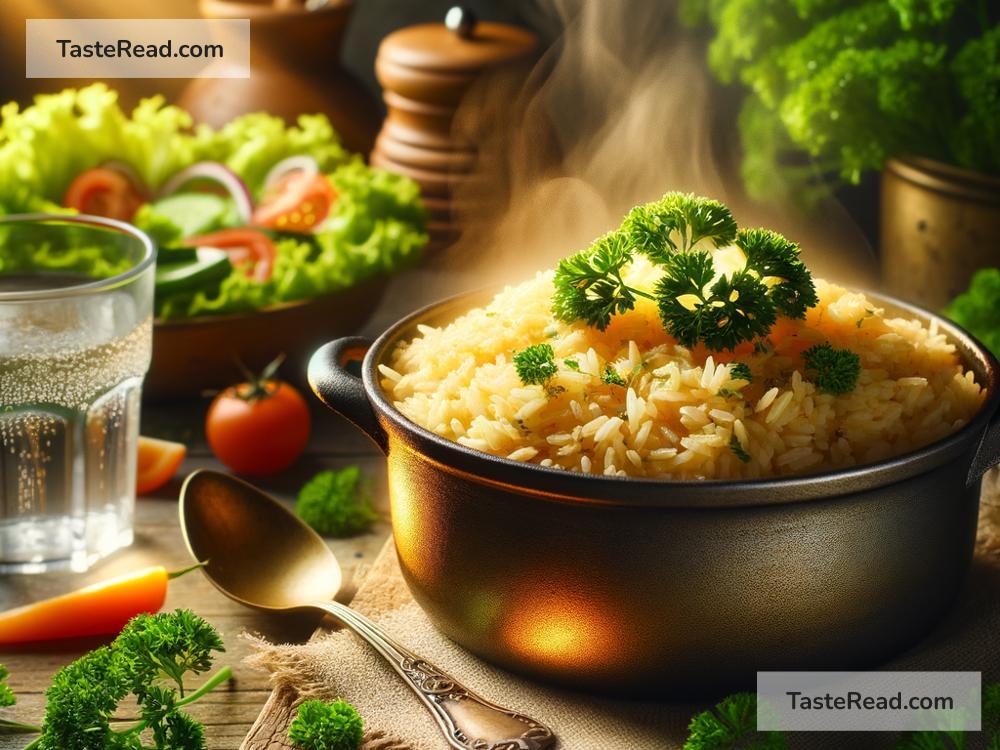How to Make Fluffy Rice Pilaf: A Simple Guide
Rice pilaf is one of those comforting dishes that can elevate any meal. Whether you’re serving it alongside roasted chicken, grilled vegetables, or even enjoying it on its own, fluffy rice pilaf is a crowd-pleaser. The good news? It’s not as tricky to make as you might think! With a few simple steps and tips, you can create a flavorful, fluffy rice pilaf that tastes like it came straight from a restaurant kitchen. Let’s dive in!
What Is Rice Pilaf?
Before we start cooking, let’s talk about what rice pilaf actually is. Rice pilaf is a dish made by sautéing rice with aromatics (like onions or garlic), then simmering it in seasoned broth until tender and cooked. Unlike plain boiled rice, rice pilaf is infused with flavor and has a distinct texture—it’s fluffy and the grains are separate, not clumpy. Adding ingredients like spices, herbs, or vegetables gives pilaf its unique taste.
Ingredients You’ll Need
Here’s a simple list of ingredients for classic rice pilaf:
- 1 cup of long-grain rice (like basmati or jasmine for fluffiness)
- 2 tablespoons of butter or oil
- 1 small onion, finely chopped
- 1 garlic clove, minced (optional, but it adds a lovely flavor)
- 2 cups of chicken or vegetable broth
- Salt and pepper (to taste)
- Optional additions (like herbs, spices, almonds, or peas)
That’s it! These are common pantry staples you likely already have. Once you unlock this basic method, you can customize your pilaf to suit your taste.
Step-by-Step Guide to Making Fluffy Rice Pilaf
Follow this simple process to prepare your rice pilaf.
Step 1: Rinse Your Rice
Fluffy rice starts with rinsing. Put the rice in a fine-mesh sieve under cold running water or swirl it around in a bowl of water. Rinse it until the water runs clear—this removes excess starch from the rice, preventing clumpiness. Let the rice drain while you prep the other ingredients.
Step 2: Sauté the Aromatics
Grab a medium-sized saucepan and heat your butter or oil over medium heat. Once melted, add the finely chopped onion and sauté until soft and translucent (about 2-3 minutes). If you’re using garlic, add it at the end of this step—garlic can burn quickly, so cook it for just about 30 seconds.
Step 3: Toast the Rice
Here’s where the magic starts. Add your drained rice to the saucepan with the sautéed onion and garlic. Stir it gently to coat each grain with the butter or oil. Cooking the rice for 1-2 minutes helps it absorb the flavors and gives it a slightly nutty aroma. Be sure to keep stirring, so it doesn’t stick or burn.
Step 4: Add the Broth
Once your rice is toasted, pour in the broth carefully. Be mindful of hot splashes! Season the mixture with salt and pepper—remember that broth is often salty, so taste as you go. Stir everything together gently.
Step 5: Simmer and Cover
Bring the liquid to a gentle boil, then cover the saucepan with a lid and reduce the heat to low. Let the rice simmer undisturbed for about 18-20 minutes (or according to your rice package instructions). The low heat allows the rice to absorb the liquid evenly without overcooking.
Step 6: Let It Rest
When the liquid is fully absorbed and the rice is tender, remove the pan from the heat and keep the lid on. Let the rice rest for 5-10 minutes—this step allows the steam inside the pan to finish cooking the rice and makes it even fluffier.
Step 7: Fluff the Rice
Use a fork to gently fluff the rice. This separates the grains and ensures the pilaf has that perfect texture. Avoid stirring or smashing the rice with a spoon, as it can make it clump.
Optional Additions for Extra Flavor
While the basic recipe is delicious, you can easily customize your rice pilaf to make it even more special. Here are some ideas:
- Add Herbs: Stir freshly chopped parsley, dill, or cilantro into the warm rice for a burst of freshness.
- Incorporate Vegetables: Toss in peas, carrots, or cooked mushrooms to add color and nutrition.
- Include Nuts or Dried Fruit: Toasted almonds or raisins add crunch and sweetness—a great way to make your pilaf feel fancy.
- Experiment with Spices: Turmeric, cumin, or paprika can infuse the rice with warm, earthy flavors.
The beauty of rice pilaf is that it’s endlessly versatile. Feel free to get creative!
Tips for Success
If you want foolproof pilaf every time, follow these tips:
- Use Long-Grain Rice: Short-grain rice tends to get sticky, while long-grain rice remains separate and fluffy.
- Don’t Skip the Sauté Step: Toasting the rice with aromatics is key for flavor development.
- Keep the Lid On: Avoid opening the lid while the rice is cooking. Let the steam do its work.
- Measure Liquid Carefully: Too much broth can make the rice mushy; too little will leave it undercooked.
- Rest and Fluff: Let the rice rest and fluff it gently with a fork for the best texture.
Enjoy Your Perfect Pilaf!
There you have it—a simple, foolproof guide to making fluffy rice pilaf. It’s easy, packed with flavor, and pairs well with virtually everything. Once you master this technique, you’ll find yourself reaching for it again and again. Whether you serve it with a hearty stew, grilled fish, or veggies, rice pilaf always steals the show.
So, grab your favorite saucepan, and start cooking. Your journey to perfect fluffy rice pilaf starts today!


